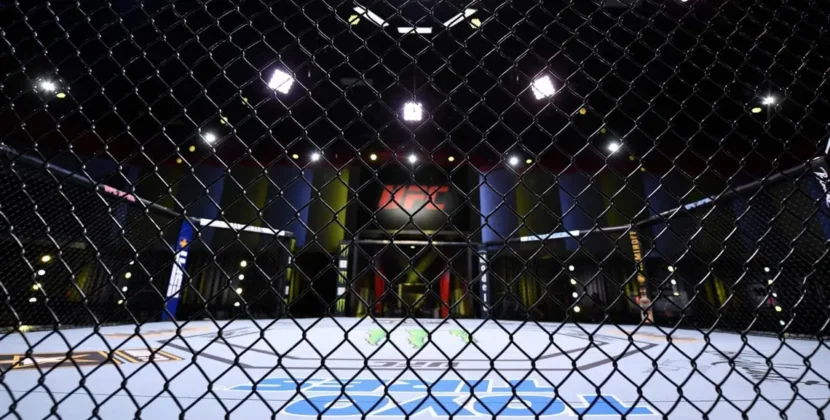
공유하다:
I explored the evolution of strength and conditioning (S&C) in combat sports, transitioning from traditional boxing methods to the more scientific approaches now prevalent in mixed martial arts (MMA). Much like mechanics in a Formula 1 team, strength coaches play a crucial yet often behind-the-scenes role in preparing fighters for competition. While our contributions might not be glamorous, they are essential for the fighter’s success in the ring or cage. However, it’s easy to overcomplicate S&C, potentially causing more harm than good. In this article, I’ll share eight fundamental rules that every S&C coach should keep in mind when training fighters.
Rule #1: Prioritize Injury Prevention
The primary objective of strength training should always be to prevent injuries. In the demanding environment of a twelve-week fight camp, injuries are almost unavoidable. Therefore, a coach’s main goal should be to make the athlete’s body as resilient as possible. By strengthening their physique, we enable fighters to withstand the inevitable knocks and bumps that occur during training. A fighter with a robust body is more likely to train effectively and optimally, which is crucial for success in competitions.
Rule #2: Enhance, Don’t Interfere
Strength training should complement an athlete’s sport-specific training, not hinder it. If fighters arrive for skills practice or sparring sore and fatigued from their strength sessions, their performance will suffer. In my early coaching days, I sometimes pushed fighters to their limits, believing it would build character. However, I’ve come to realize that pushing a fighter to complete one more rep when they are already exhausted is counterproductive. Instead, reserve intense efforts for sparring, which naturally tests their limits and builds resilience.
Rule #3: Mobility Matters
One common misconception is that a fighter’s impressive physical appearance guarantees performance. I’ve seen athletes who excel in the gym struggle in the ring due to
limited mobility. The phrase “you are only as strong as your weakest link” rings true here. If a fighter can’t execute basic movements like touching their toes or lifting their arms overhead, their potential is compromised. Enhancing mobility increases a fighter’s range of motion, allowing them to execute techniques more effectively. Ultimately, fighting is a dynamic dance, and fluid movement is essential for success.Rule #4: Focus on Full-Body Movements
Fighters are not bodybuilders; their training should reflect this distinction. Instead of isolating muscle groups, coaches should emphasize full-body movements that mimic those performed during a fight. Exercises like deadlifts, Bulgarian split squats, Turkish get-ups, and power cleans provide functional strength. Building a strong posterior chain—comprising the back, glutes, and hamstrings—yields significant power for fighters, enhancing their explosiveness.
Rule #5: Build Explosive Power, Not Size
The goal is to develop strength and explosive power, not to bulk up. In combat sports, speed is a crucial element; faster fighters can deliver harder punches and execute techniques more effectively. When discussing muscle growth, it’s important to differentiate between two types of hypertrophy: sarcoplasmic and myofibrillar. Sarcoplasmic hypertrophy, which bodybuilders seek, leads to muscle swelling without necessarily increasing strength. In contrast, myofibrillar hypertrophy focuses on enhancing the size of muscle fibers, which contributes to power without excessive bulk.
Rule #6: Emphasize Low Reps and Long Rest Periods
For fighters, training should focus on low repetitions with relatively heavy weights and longer rest periods. Ideally, fighters should perform no more than ten reps for lower-body exercises and around twenty-five total for upper-body exercises. My preferred approach involves working within a 3-5 rep range, allowing athletes to avoid approaching their one-rep max (1RM). This method minimizes the risk of injury and fatigue, keeping fighters fresh for sparring. Additionally, rest times should be extended—sometimes up to five minutes—allowing the central nervous system (CNS) to recover fully, which is vital for maximizing strength.
Rule #7: Address Weaknesses
Coaching differs from personal training in that it focuses on identifying and addressing weaknesses. Every fighter has unique attributes and deficiencies, whether they relate to strength, mobility, or both. It’s essential to tailor training programs to meet individual needs rather than adopting a one-size-fits-all approach. Coaches should strive to provide one-on-one attention, ensuring fighters receive the structured support they need to improve.
Rule #8: Start with Cardio
Finally, while I once viewed cardio training skeptically, I’ve learned it is an integral part of S&C. Fighting is an aerobic sport, and developing a fighter’s aerobic capacity can significantly impact their performance. The objective is to enhance their aerobic threshold, allowing them to maintain a faster pace without entering an anaerobic state. A well-structured cardio plan is crucial during a fight camp, beginning with steady-state runs to build a strong aerobic base. As the camp progresses, the focus can shift toward higher-intensity work, such as round replication drills. These exercises challenge fighters in their anaerobic zones while allowing them to recover effectively, thanks to the solid aerobic foundation laid earlier.












